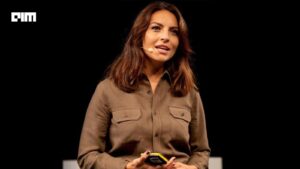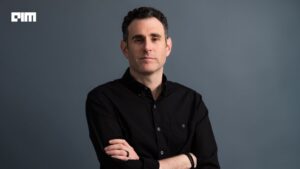Bank of America recently announced that it is running 270 artificial-intelligence and machine-learning models across its operations.
That number alone signals a level of integration few global banks have reached. During the same investor event, executives said AI has cut fraud losses by half and reduced service-call volumes by 60 percent.
Roughly 18,000 software developers now use AI coding agents internally, producing productivity gains of about 20 percent. According to CEO Brian Moynihan, AI is the company’s competitive moat.
Over the past year, the bank has turned what began as digital experimentation into a full-scale operational architecture.
AI as Infrastructure
According to Bank of America , it now treats AI as a foundational layer. Its annual technology spend tops $13 billion, with about $4 billion directed to new technology initiatives in 2025.
That capital supports a long-term transition led by former CTO Aditya Bhasin and CEO Moynihan. The pair have pushed to make data the connective tissue of the bank’s systems, echoing the company’s mantra that “you can’t have a big and bold strategy without a data strategy.”
The results show up in its intellectual property. As of October 2024, Bank of America held nearly 1,100 AI and machine-learning patents or pending applications, a 94 percent increase since 2022.
Externally, its virtual assistant Erica has become one of the most heavily used in finance. Since its 2018 launch, Erica has reached tens of millions of customers and processed billions of interactions.
Internally, a companion system called Erica for Employees now supports more than 90 percent of staff, cutting IT-help-desk calls by over 50 percent.
By aligning data pipelines, feature stores and model platforms, the bank has built reusable AI “plumbing” that powers everything from customer service to fraud detection.
Results That Compound
Across the organization, the company says AI now delivers measurable outcomes.
Fraud-detection models identify abnormal behavior fast enough to cut the loss rate by 50 percent. Contact-center automation and self-service tools have reduced incoming calls by 60 percent.
Meanwhile, 18,000 developers using generative-AI coding assistants are releasing updates faster and writing cleaner code, with a 20 percent productivity lift.
In wealth management, tools powered by large-language models summarize research and prepare client material for advisors. Each use case reinforces the next: data from Erica trains internal models, which improve operational efficiency, which in turn generate cleaner data for risk and credit systems.
This loop (build, deploy, learn, reuse) is how Bank of America’s AI strategy compounds value.
Under the surface, Bank of America’s AI operations run on a hybrid cloud framework built with Red Hat OpenShift and IBM Cloud Private, part of a long-standing collaboration with IBM since 2019.
This setup allows the bank to train and deploy sensitive models inside its own secure environments while scaling others through managed infrastructure. Internal data-science teams use centralized model registries and a risk-management layer that enforces version control, explainability checks, and sign-offs before deployment.
The architecture ensures that every AI system, from fraud engines to coding agents, can be monitored, audited, and retrained under a single governance dashboard. It’s an approach closer to an enterprise software platform than a banking app, illustrating why BofA’s AI expansion has been unusually stable compared with peers experimenting with third-party models.
Governance as a Competitive Moat
Running hundreds of AI models inside a regulated bank demands precision. Bank of America has developed a hybrid-data architecture that meets both global and local compliance standards.
President Bernard Mensah has described the need for “constant investment” in infrastructure to satisfy evolving regulations in every market where the bank operates.
Equally important is the cultural side. The company repeats that “people, not algorithms, remain our greatest asset.” Staff completed more than 1 million conversation-simulation sessions last year, part of an ongoing AI-literacy and reskilling program.
As competitors like JPMorgan Chase and Goldman Sachs are investing heavily in their own AI programs, at present Bank of America’s edge seemingly lies in integration: connecting its customer tools, internal assistants and risk systems under one governance framework.
The bank’s next step is agentic AI, with the infrastructure already in place to support it. With 270 models in production, billions of interactions processed, and measurable cost savings, Bank of America has moved beyond experimentation.
It is now, by reasonable definition, an AI-first bank, where infrastructure, governance and culture combine to make the technology an ordinary part of how the institution works.











